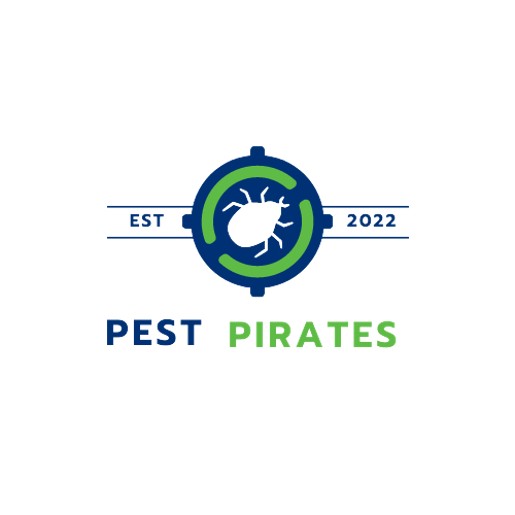
Identifying Termite Infestation
When it comes to safeguarding your home against pests, recognizing the signs of termite infestation is critical. Termites can cause extensive damage if left unchecked, so being vigilant about the indicators of their presence is key to protecting your property.
Signs of Termite Infestation
Termites are often called ‘silent destroyers’ because they can be chewing through your woodwork, wallpaper, flooring and even the foundational beams of your home for a long time undetected. Here are some definite signs that you might be hosting these unwelcome guests:
- Termite Waste: Keep an eye out for termite droppings, known as ‘carton’ or ‘frass’. These tiny, dark markings or a powdery substance around areas where wood structures are present could signal an infestation. (Aantex)
- Mud Tunnels: Subterranean termites build mud tubes as highways from their colony to their food source — your home. You might find these pencil-sized tunnels near the foundation of your house, on support piers, or along plumbing. To confirm an active infestation, break a section of the tube and check for the presence of termites or observe if the tunnel is repaired. (Mississippi State University Extension Service)
- Damaged Wood: Wood that sounds hollow when tapped, displays maze-like designs, or feels soft and easily punctures could indicate termite activity within.
- Discarded Wings: After swarming to start new colonies, termites shed their wings. Finding small piles of wings inside your home near windows or doors is a sign of termite presence.
- Blistering Sheetrock: Unusual blistering on your sheetrock or walls might be a result of termites tunneling close to the surface.
Visual Indicators
In addition to the signs mentioned above, there are certain visual cues that can help you confirm a termite infestation:
- Mud Shelter Tubes: These are often visible traveling up foundation walls and are a sure sign of termites. These tubes protect termites from predators and conserve moisture, which is essential for their survival. (Mississippi State University Extension Service)
- Pinholes in Walls: BB-sized spots of dried mud on interior walls or ceilings, referred to as “pinholes”, are indicators of an active termite infestation. If you discover such spots, scrape away the mud to check for holes and monitor for activity. (Mississippi State University Extension Service)
- Wood Patterns and Damage: Termites eat wood from the inside out, leaving a thin veneer of timber or paint. When you come across wood that has been hollowed out along the grain and has bits of dried mud or soil lining the feeding galleries, you’re likely looking at termite damage.
Being aware of the visual indicators and signs of termite infestation is paramount. Early detection can save you from the costly repairs that come with severe structural damage. If you suspect termite activity in your home, it’s advisable to promptly contact a reliable termite control company for an inspection and discuss treatment options, such as drywood termites elimination, dampwood termites control, and formosan termites eradication. Remember, the sooner you address the issue, the better your chances of minimizing damage and maintaining a sturdy, termite-free home.
Effective Termite Treatment
Once you’ve identified signs of termite infestation, the next crucial step is to consider the most effective termite treatment options. Eradicating termites promptly is vital to protect your home and prevent further damage.
Professional Inspection
It is highly recommended to enlist the expertise of a reliable termite control company when you suspect a termite problem. Professionals can conduct a thorough inspection of your property to confirm the presence of termites and assess the extent of the infestation. They have the tools and knowledge necessary to detect termites in less visible areas and can evaluate the damage to provide a suitable treatment plan.
When scheduling an inspection, expect the specialist to examine both the interior and exterior of your home, including hard-to-reach areas like crawl spaces and basements. They will look for common signs such as mud tubes, damaged wood, and termite waste (Aantex). After the inspection, the specialist will discuss with you the findings and recommend the best treatment method based on the types of termites infesting your home and the severity of the infestation.
Treatment Options
The treatment options for termites fall into two broad categories: chemical treatments and physical treatments. Here are some common methods:
Chemical Treatments
-
Termiticides: These are liquid pesticides used to create a barrier in the soil around your home. They work to kill existing termites and prevent future infestations. For more information, explore chemical termite treatments.
-
Termite Baits: Baiting systems are placed around your home to attract and poison termites. This method is less invasive than liquid treatments. Discover the best termite baits available.
-
Fumigation: This intensive treatment option involves covering your home with a tent and filling it with a gaseous pesticide to eliminate the termites. Learn about the termite fumigation process.
Physical Treatments
-
Heat Treatment: Exposing termites to high temperatures can effectively eliminate them. Find out more about heat treatment for termites.
-
Freezing: For localized infestations, cold treatments using liquid nitrogen can be used.
-
Electrocution: High-voltage electric currents can kill termites in specific areas.
| Treatment Method | Description | Best Used For |
|---|---|---|
| Chemical Barrier | Liquid termiticide in soil | Perimeter of home |
| Bait Systems | Stations with poisoned bait | Around home, less invasive |
| Fumigation | Gas pesticide, tenting home | Severe, widespread infestations |
| Heat Treatment | High temperatures to kill termites | Entire home or localized areas |
| Freezing | Liquid nitrogen to freeze termites | Small, accessible infestations |
| Electrocution | Electric currents to kill termites | Visible, accessible infestations |
Remember, each treatment varies in cost, effectiveness, and duration. It’s important to consult with a professional to determine the best approach for your situation. For insights into pricing, refer to average termite treatment costs.
For those seeking natural or less toxic solutions, options like neem oil, beneficial nematodes, or orange oil may be explored. Additionally, consider preventative measures such as termite-resistant building materials and landscaping practices to deter termites to maintain a termite-free home.
Choosing the right termite treatment is essential. Whether opting for a DIY approach or professional help, always take into account the safety of your family and pets (child and pet safety termite treatments), the environmental impact (environmental impact termite treatments), and the specific needs of your home based on its construction and location. Regular follow-ups with termite inspections are key to long-term termite management and ensuring that your home remains safe and structurally sound.




